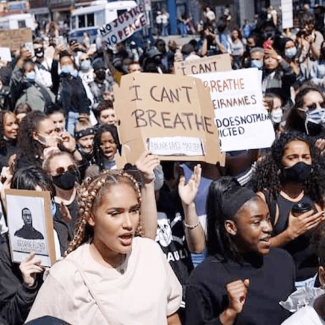
THE Covid-19 pandemic laid bare the inequities and injustices of the capitalist system worldwide. And while the pandemic continues to rage, a worldwide protest has risen up against another systemic feature of capitalism – racism and brutal, biased, militarised policing. Liberation looks at the “Black Lives Matter” uprising against racism in the USA that has spread across the world, and what lessons it holds for India.
I Can't Breathe
On May 25, 2020, George Floyd, a 45 year-old Black man, was choked to death on a public street by a white Minneapolis police officer who placed his knee on Floyd’s neck for nearly nine minutes, ignoring Floyd’s desperate pleas of “I can’t breathe”. Two other police officers helped hold Floyd down. The police had been called to the scene by a store-owner who had said that Floyd “was awfully drunk and not in control of himself when he tried to pay (for a pack of cigarettes) with a counterfeit $20 bill”.
The police initially hid the cause of Floyd’s death, claiming he resisted arrest and that they called an ambulance after they saw that he “appeared to be suffering medical distress”.
But the truth came out because of footage recorded by a passerby - 17-year-old Darnella Frazier, a Black teenage girl - on her phone camera. The footage showed that Floyd was not struggling but was in fact begging to be allowed to breathe, and that the police officer only lifted his knee after Floyd fell unconscious.
The murder of George Floyd was only one of the latest in a long line of such killings of African-American and Black people by police officers and even by white civilians. On March 13, 2020, Breonna Taylor, a 26-year-old African-American woman, was sleeping in her own bed in Louisville, Kentucky when police broke into her home without knocking. Taylor, an emergency medical technician who was an essential worker in the pandemic, died on being shot eight times by the police.
Not long ago, a white father and son duo armed with guns, pursued Ahmaud Arbery who was jogging, and shot him dead, claiming they thought he was a criminal. Arbery is one of many Black men and boys killed by white civilians who claim to have felt “threatened” by them. On May 25, 2020, the same day that Floyd was killed in Minneapolis, another incident in New York City's Central Park highlighted how racist white people deliberately weaponise the police against Black people. A white woman, asked by a Black birdwatcher in the park to leash her dog in keeping with park rules, called the police claiming she was being “threatened by an African-American man”. It was clear she knew that if the police were to come, the incident could cost the Black man his life.
Police in the US disproportionately stop Black drivers of cars, and in affluent neighbourhoods – assuming that they could not own or rent a nice car or house, and must have stolen the car or be planning to rob a house. Many of these confrontations have resulted in killings. One such killing – of Philando Castile – was recorded on camera.
Black and Hispanic people are disproportionately overrepresented in US jails and prisons in the US.
But in spite of a huge number of such racist crimes and killings being caught on camera, the perpetrators have tended to enjoy full impunity and escape without any punishment.
The police officer who killed George Floyd had no less than 17 complaints against him in 20 years of service – yet he kept his job as a police officer with the right to wield deadly weapons. There have also been multiple complaints against at least one of his fellow officers who helped him as he killed Floyd.
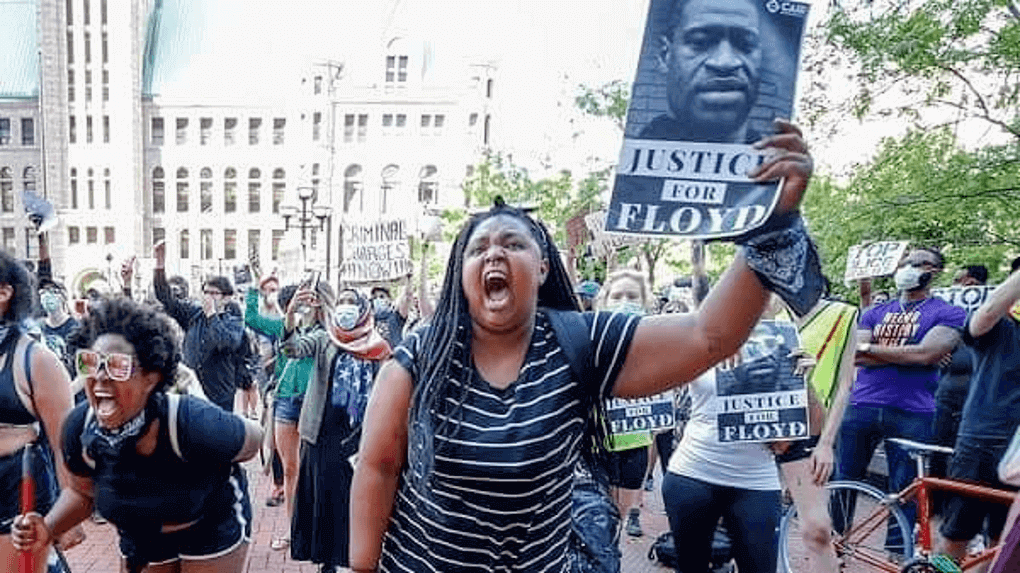
The Upsurge of Protests
Somehow, the video of George Floyd’s murder blew the lid off the churning anger at systemic racism and police brutality. Here have been “Black Lives Matter” protests before this – but this time the protests are unprecedented and historic in scale and impact. Thousands of people in every single one of the US’ 50 states came out on the streets in protest. They wore masks to avoid spreading Covid-19, but they refused to leave the streets, even as the police met the protests with tear gas, rubber bullets, batons, and more wanton displays of brutality and racism.
This time, the uprising is not just demanding that the police officers who killed George Floyd be arrested and charged with murder. It is demanding an end to “chokeholds” and “no knock warrants”, and other police reforms – but that is not all. It is demanding that statues erected to those who waged a Civil War against the US to defend slavery, be taken down – and it is making the connections between slavery, followed by legally enshrined segregation/apartheid as well as lynchings, followed by covert denial of civil rights including voting rights, and today’s situation of racism enforced by the might of the police. While it is taking on the Trump regime’s racism and defence of white supremacy, it is refusing to allow the whole issue to be polarised between Republican vs Democrat; it is pointing out how Bill Clinton’s regime encouraged and strengthened the brutality, impunity and racism of the police, disguised under the rhetoric of “law and order” and “fighting crime.”
The movement, then, is challenging the entire system. It is seeking to get the knee of racism off the necks of black communities. It is demanding to “defund the police” and even “abolish the police.” It is demanding that the money being poured into militarising the police, and brutally policing and incarcerating poor and black communities, be redirected towards caring for those poor and marginalised communities, and providing education, healthcare, childcare, dignified work, wages and pensions for all. It is arguing that investing in care rather than criminalisation and incarceration will in fact help to reduce and prevent crime. In the US, it is a mass movement demanding a radical break with the past, and revolutionary social and economic changes.
The movement has also spread worldwide. For the first time, there is a global movement demanding a reckoning with the history of slavery and colonialism which is the foundation for capitalism and for the balance of forces in the world today.
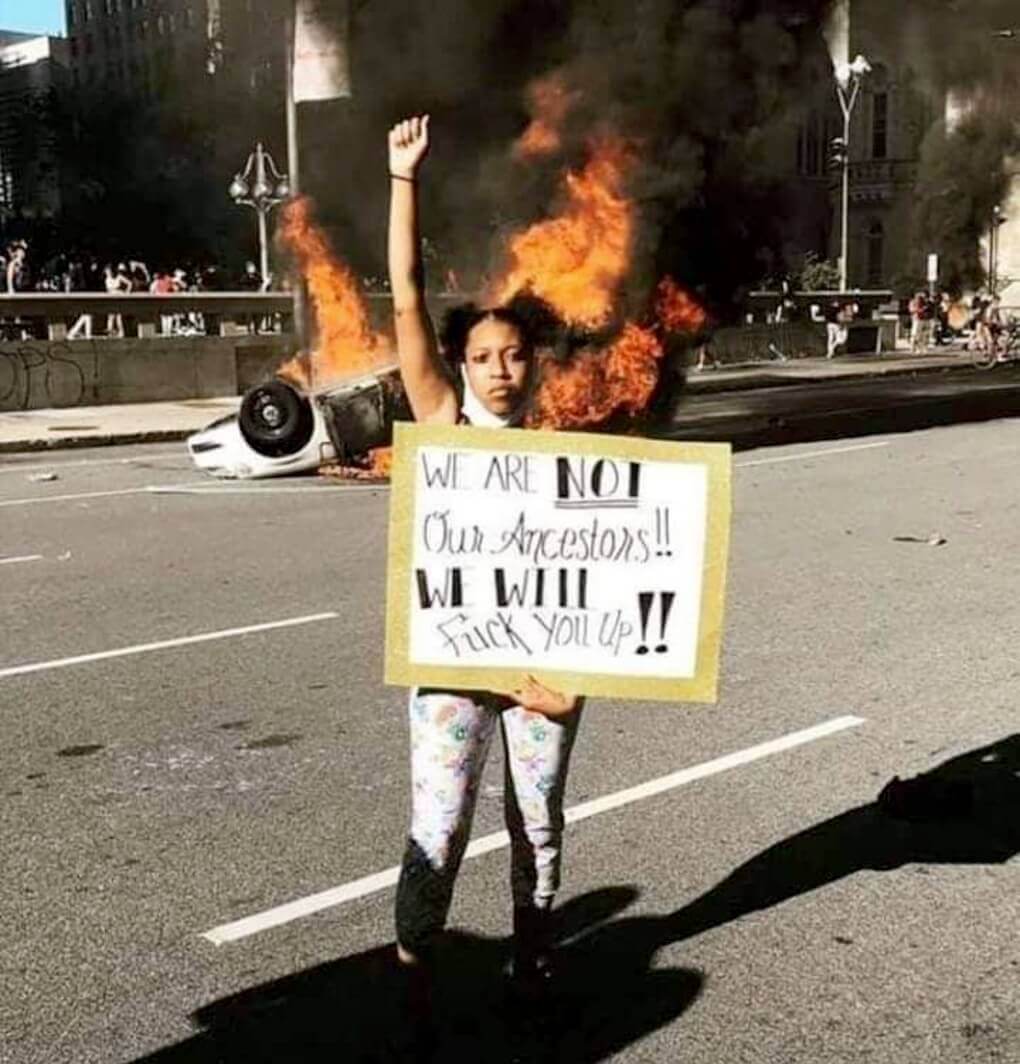
The Legacy of Racism in The US
To quote Howard Zinn, “By 1800, 10 to 15 million blacks had been transported as slaves to the Americas, representing perhaps one-third of those originally seized in Africa. It is roughly estimated that Africa lost 50 million human beings to death and slavery in those centuries we call the beginnings of modern Western civilization, at the hands of slave traders and plantation owners in Western Europe and America, the countries deemed the most advanced in the world...Slavery grew as the plantation system grew.”
Slavery was eventually abolished in 1865, after two centuries of resistance by slaves, and after a Civil War in which the Southern slave-owning plantation states of the USA tried to secede to defend their right to continue to own slaves. But the formal end of slavery did not mean racial equality of the African-American or Black people in the US.
To quote from a petition in the Supreme Court of India seeking a law against lynchings, drafted by Ms Indira Jaising, “Between the American Civil War and the World War II, the US witnessed an era of racial subordination and segregation where thousands of African Americans were lynched on the basis of their race and color. Lynching in the US was a tool to reinforce the Jim Crow laws that enforced the principles of racial subordination and segregation by restricting civil liberties and civil rights of the African Americans which paved way for white supremacy or, in simple terms, imposed a post-slavery system of racial dominance.”
Lynchings continued well after World War II, and Blacks in the USA were systematically denied the right to vote, and Blacks were segregated from Whites in a formal apartheid system. Pretexts for lynching Black men and boys included claims that they were seeking to rape White women, or that they were thieves or criminals. Anti-miscegenation laws (that criminalized inter-racial sexual relationships and marriage) were declared unconstitutional by the US Supreme Court as late as 1967 – and it is a fact that in 1934, similar laws in Nazi Germany took the US racist laws as their inspiration.
It took a massive Civil Rights movement in the 1950s and 1960s, by Black people and white allies, to demand an end to segregation, to integrate Black and White social and educational institutions, and to achieve the formal and substantive right to vote.
However, just as the legal abolition of slavery did not end racism, neither did the legal end to apartheid and segregation. The social and economic legacy of racism in the US are not mere fading scars of an old wound; that legacy still runs in the blood and veins of the US state and global capitalist order.
That legacy locks black people in the US into unequal incomes, chronically poor neighbourhoods where schooling and healthcare and childcare are poor. The profiling and targeting by the police systematically jail or kill black men, robbing black families of fathers and making it harder for these men with criminal records to access dignified and secure jobs. The legacy of lynching can still be seen in the spate of incidents where white men and women claim to feel threatened by black boys and men, as an excuse to either kill them or call police to the scene.

Demilitarise and Defund the Police
Black Lives Matter protestors have for some years now been pointing out the increasing militarisation of the US police forces. The police cracking down on the current protests can be seen wearing military-style camouflage uniforms, and wielding sniper and assault rifles, and other military weapons. The US Department of Defense, since the 1990s, has been reissuing millions of dollars worth of Army equipment to the police forces. An Amnesty International report noted that US police forces travel to Israel for training from Israeli military officers. This has encouraged and empowered the US police to feel and behave like an occupying army force, especially in poor and black neighbourhoods.
One of the key issues being raised by the protestors is that the police institution be dismantled and criminal justice be fundamentally reimagined and reshaped.
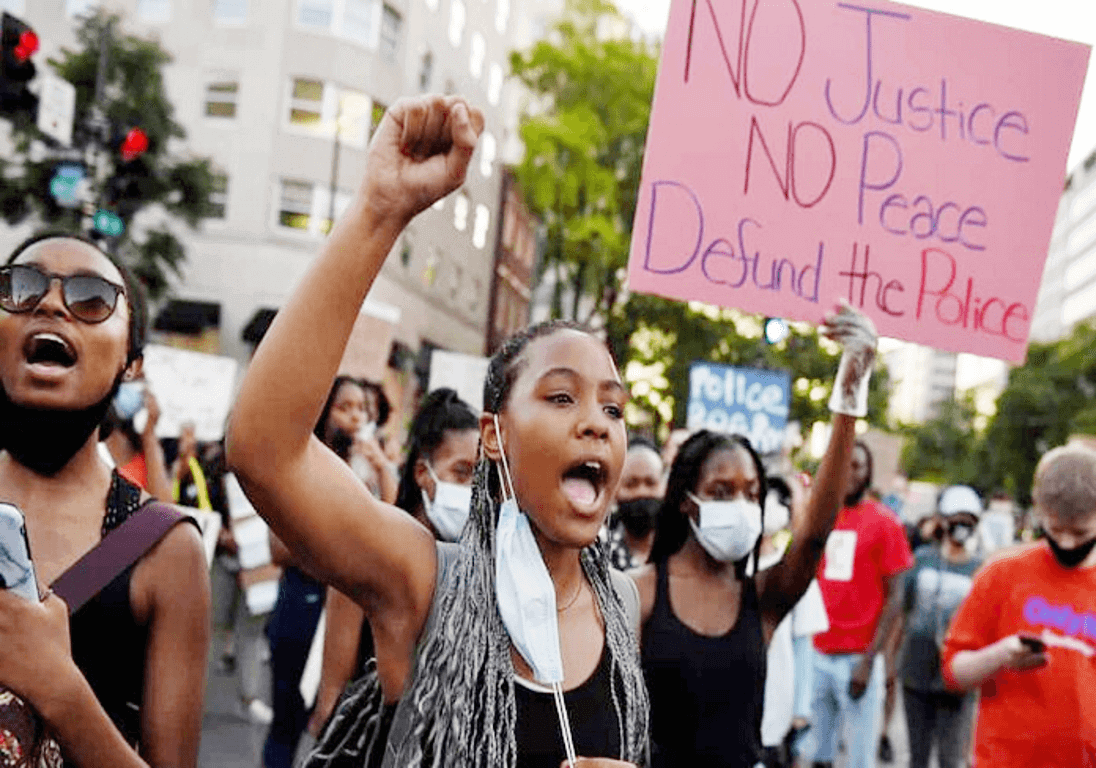
Movement Achievements
The movement’s spread and impact have been unprecedented. In Minneapolis the movement forced authorities not only to arrest the police officers who killed Floyd but to charge them with murder instead of the mere manslaughter with which they had initially been charged. A U.S. judge ordered Seattle police to temporarily stop using tear gas, pepper spray on the protestors. The Minneapolis City Council voted to “dismantle” and “abolish” the city’s police department and replace it with a new system of public safety. At a rally, Lisa Bender, the Minneapolis city council president, said:
In Minneapolis and in cities across the US, it is clear that our system of policing is not keeping our communities safe. Our efforts at incremental reform have failed, period. Our commitment is to do what’s necessary to keep every single member of our community safe and to tell the truth: that the Minneapolis police are not doing that. Our commitment is to end policing as we know it and to recreate systems of public safety that actually keep us safe.
In Seattle, people occupied an area close to Capitol Hill (the government building) and termed it the “Capitol Hill Organized Protest (CHOP)”. The sustained movement won significant victories including a ban on some of the most brutal police practices (such as the use of chokeholds and tear gas). After a shooting at the occupation site (it is not clear who fired the shots), Trump and the right-wing have been trying to characterise the CHOP as violent, and threatening to forcibly clear it. In response, the Socialist Alternative leader elected to Seattle’s City Council released a statement, declaring:
Many in the movement are concerned that the resources and attention required to maintain an ongoing overnight occupation at the CHOP could take away from a focus on getting organized to win the demands of the movement. This is a key moment to keep building our movement’s power, and to win far-reaching change to stop racist policing and invest in our communities, such as:
- Defund the police through cutting the budget by at least 50%, and use these funds instead for social services.
- Immediately release all protestors, with all charges dropped.
- Transfer the East Precinct to permanent community control, through a City-funded community center, affordable housing, or and/or other community-driven initiatives.
- Establish an independent elected community oversight board, with full powers over the police, including hiring and firing.
- Immediately invest in 1,000 publicly-owned affordable homes in the Central District, and expansion of affordable housing and priority-hire jobs citywide, paid for by taxing big business, to address the ongoing crisis of racist gentrification.
Some of the leaders from the CHOP have themselves recently suggested that the protest should focus its activities on the hours between 8am and 8pm. Socialist Alternative and my Council office support that proposal. This can allow the daytime hours of the CHOP to continue to be a focal point for the movement and our demands.
This is a decision for the movement to make democratically.
A week ago, we won a historic victory, making Seattle the nation’s first city to ban the use and purchase of chemical weapons and other barbaric “crowd control” weapons. We also won a ban on the use of chokeholds by the police. Our movement succeeded in forcing Mayor Durkan and the establishment from ending the minimal existing federal oversight on Seattle police, keeping the consent decree in place. Rank-and-file members of the MLK King County Labor Council voted in a majority to expel the Seattle Police Officers Guild for their racist practices, because an injury to one is an injury to all.
There has been a tremendous show of solidarity with the #BlackLivesMatter movement through workplace action: on June 12, a march and rally of over 60,000 included many workers walking off their job sites.
Occupation is an important tactic in the arsenal of movements, but it cannot by itself be a replacement for building our movement, including organized workplace action, for radical reforms and for a fundamentally different kind of society based on solidarity and equality.
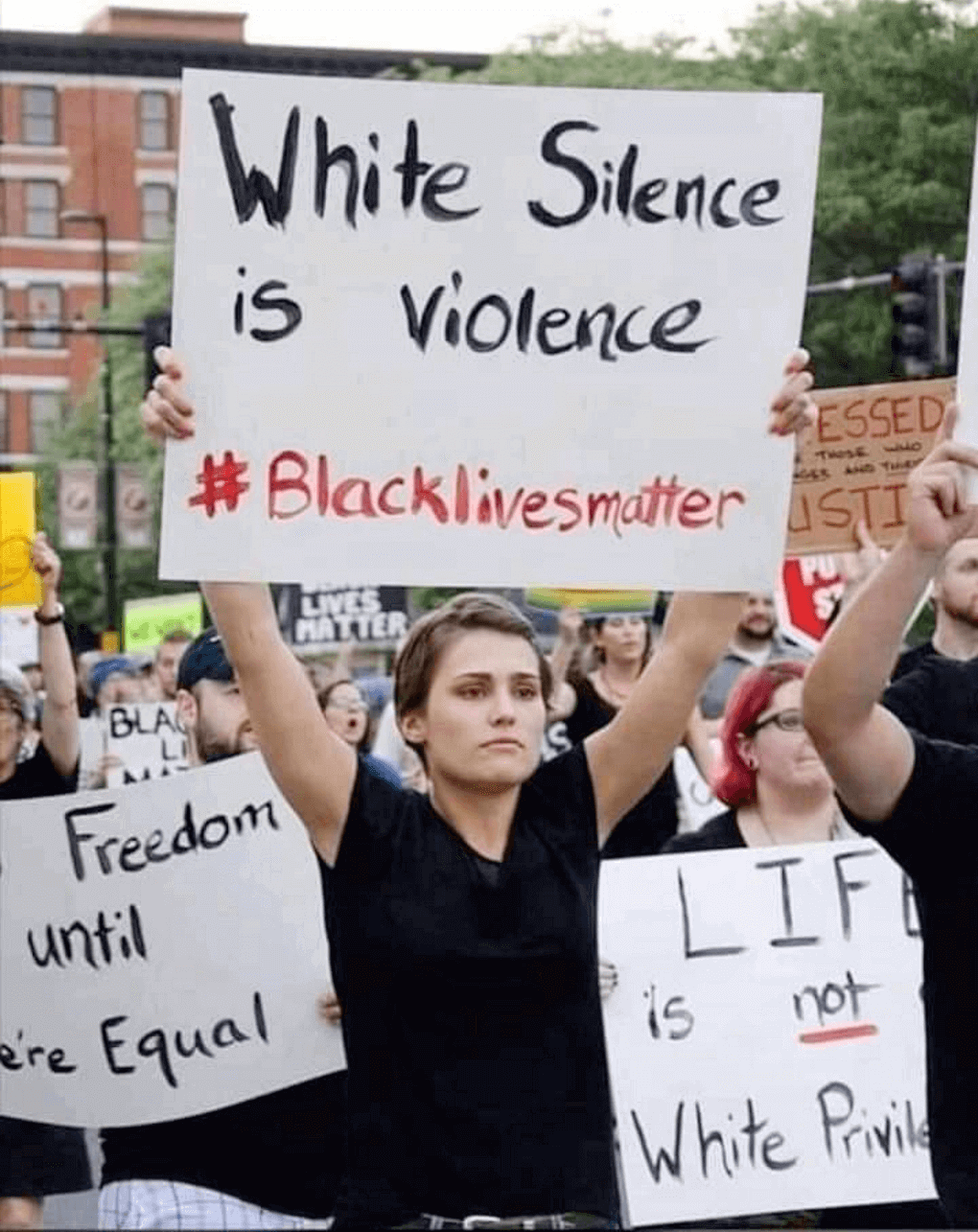
Trump Regime’s Response
While the protests were largely peaceful, there were some early instances where angry protestors set fire to police vehicles or vented rage on stores. But the US President Trump branded the protestors as “thugs” and “looters”, has unleashed the armed National Guard against them, and called for the military to be unleashed to “dominate” the streets. Pouring petroleum on the fires of tanger against the militarised police, Trump called for protestors to be shot dead, or arrested and jailed for at least a decade. On one occasion when he visited a church close to the White House, police unleashed tear gas and batons on unarmed, peaceful protestors.
Trump’s slogan “when the looting starts, the shooting starts” is reminiscent of instances in US history when workers striking for an 8-hour day or anti-racist protestors demanding civil liberties have been branded “looters”, with newspapers and politicians calling for them to be shot. Across the world, the current protests and the Trump administration’s crackdown on peaceful protestors has exposed the US democracy as fragile, and the US President Trump as a racist wannabe military dictator.
All over the US, statues and institutions erected during the Jim Crow era to leaders of the pro-slavery Confederate Army were brought down by protestors. Even some Republican leaders and the military establishment bowed to the public sentiment and supported the idea of renaming military bases that were named after Confederate generals (generals who had, after all, waged war against the US Army). Trump became one of few notorious Presidents in US history to openly defend Confederate monuments and symbols, which he described as “beautiful”. But by doing so, he was also seeking to consolidate his racist base, in view of the Presidential elections due in November this year.
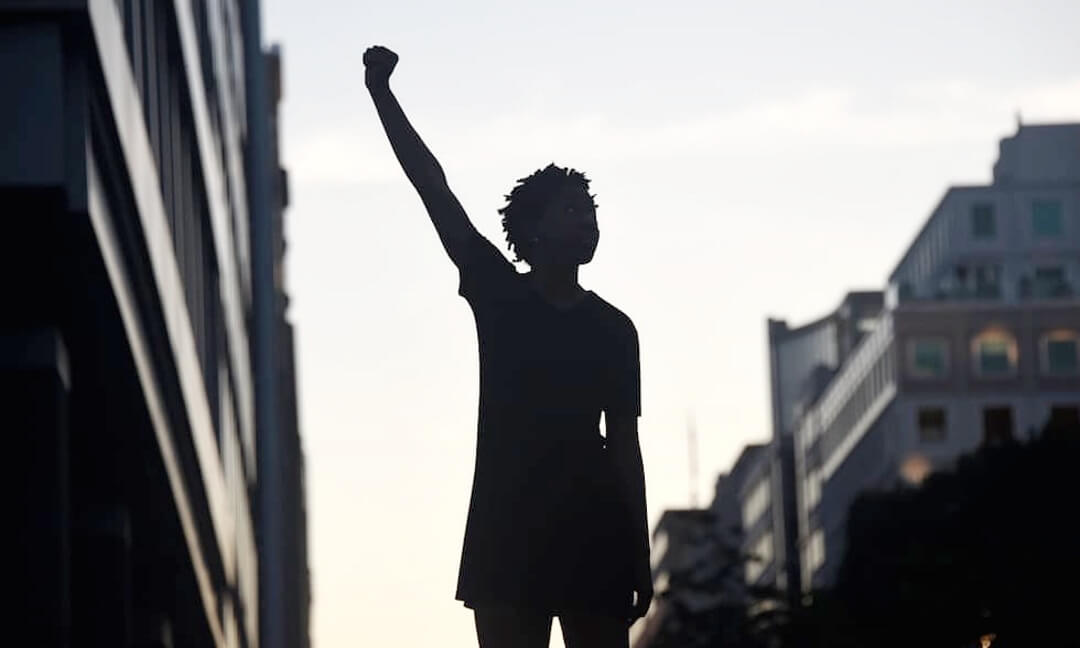
Racism in India
In India, the BLM protests in the USA and globally have a resonance for more reasons than one.
In the first place, racism against Black people is especially virulent in India, but Indian political leaders deny racism. There have been a series of attacks on students, and women from African nations in Indian cities and towns – in Delhi (where an AAP Law Minister led a mob to attack Black women who were branded as sex workers and drug dealers), and where 3 Black men were attacked by a mob at Rajiv Chowk Metro Station; Noida (where WhatsApp groups spread rumours branding Black people as cannibals and a mob violently attacked African students); in Goa (where Ministers have openly called for Black tourists to be evicted); Punjab (where an African student was brutally attacked and left in a coma by a mob); in Bangalore, where a Black woman was stripped and assaulted by a mob on a public street. The list could go on an on. Black people from various African nations – as well as Ambassadors and leaders of those nations – have raised the issues of daily, vile racist abuse as well as repeated discrimination and violence by Indians against Black people. After listening to US comedian Hasan Minhaj speak on the Asian and South Asian community’s racism against Black people, West Indian cricketer Darren Sammy realised that the epithet used to him by his Indian IPL teammates - ‘kalu’ - was actually a racist anti-Black slur, one of many that exist in Indian languages.
In India, however, the introspection about racism which is happening in other countries, seems missing. The Indian cricketers called out by Darren Sammy responded by telling him they used the jibe “from a place of love” and not to demean him. The point about racist (and casteist, sexist, homophobic or transphobic) abuse is that the intention is not the issue. The history and context of the jibe make it racist. “Kalu” is the equivalent of the N word, a derogatory jibe against Black people. Indians have yet to recognise their own racism even when it stares them in the face.
Likewise, influential social media commentator Dhruv Rathee did a show on Black Lives Matter – only to hand out the advise that names like “Black Lives Matter” and “feminism” are divisive because they “favour” Blacks and women respectively. Such judgements reflect a refusal to listen to, and learn from a historic movement. Instead, such influential people are choosing to speak the lives of the racists who counter “Black Lives Matter” with “All Lives Matter.” If you say your house is on fire, I should not turn around and say – “But all houses matter.” There is a need to say “Black Lives Matter” because right now, Black lives are treated as though they do not matter. “Black Lives Matter” does not mean “ONLY Black lives matter” - it means Recognise That Black Lives Matter Too. Likewise, to talk of a humanist movement instead of feminist or a Dalit movement would be to hide the fact that right now, we need a movement to change the fact that women and Dalits are treated as less than human. In India, many like to say “I do not see caste/race/gender/class etc, we only see humans.” That is equivalent to saying, “I do not see your oppression on the basis of caste/race/gender/class, and I do not see my caste/race/gender/class privilege.” Such statements perpetuate the oppression by denying it, by refusing to recognise it, and work to dismantle it. So those who say “I do not see caste” will oppose caste-based reservations. Those who say “I do not see gender” will oppose policies that seek to protect women’s rights.
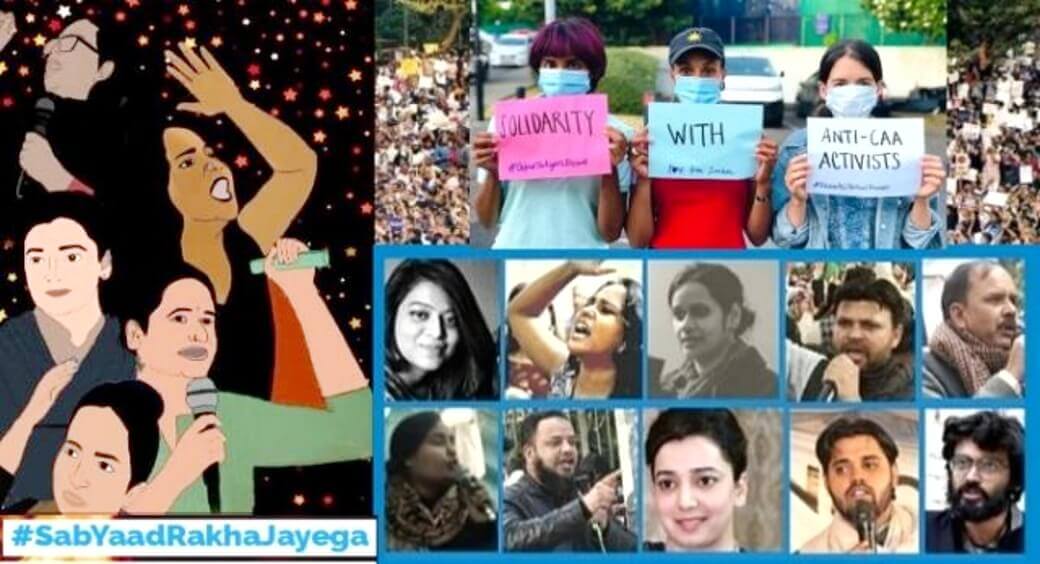
Police Bias and Brutality in India
In India, it is useful to remember that the BJP leaders’ slogan of “Desh ke gaddaron ko, goli maaro saalon ko” (shoot dead the traitors) is the twin of “when the looting starts, the shooting starts.” Just as Trump is branding anti-racist protestors as looters and calling for them to be massacred, the BJP and the Modi regime branded pro-democracy, anti-CAA protestors as “traitors” and called for them to be massacred and shot dead. In February 2020, when Trump was being feted by Modi in India, BJP leaders like Kapil Mishra were inciting mobs to attack and kill anti-CAA protestors and Muslim communities supporting those protests. The same Kapil Mishra has tweeted that the US should follow his example and realise that when the “wrong people” take over the streets, the “right people” must come out on the streets to stop them. The indication is clear: in the BJP’s worldview, the African Americans, the persons of colour and anti-racists in the US, and the Muslims and anti-communal protestors in India, are “wrong people”, while white supremacists in the US and cadres of communal fascist outfits in India are the “right people”.
It is high time that the systemic communal, casteist, and class bias in India’s policing and criminal justice systems is acknowledged. That bias is not new – independent India’s history is littered with instances of massacres of Muslim, Sikh, and Christian minorities, Dalits, Adivasis, Kashmiris, Manipuris and Nagas by the police and armed forces, and massacres of Muslims and Dalits by communal and feudal organisations. Teargas, batons and bullets (and in the case of Kashmir, pellet guns) against peaceful protestors is common. Justice has been systematically denied in most of these instances, and the perpetrators of the massacres have enjoyed promotions and the seats of political power. African Americans and persons of colour form a disproportionate and overwhelming part of prison populations in the US – and the same is true of Dalits, Adivasis, and Muslims in India. Muslims, dalits and tribals make up 53% of all prisoners in Indian jails. Torture, false charges, and fake encounters (custodial killings) by the police against these sections of people, who also overlap with the poorest of Indians, are the norm, not the exception.
In the past six years of the Modi regime, these systemic biases have become more blatant. Muslims have been lynched by communal mobs, and the police have protected the lynch mobs and dehumanised dying Muslims. Recently, during the Covid-19 pandemic, a Dalit man in Betul, Madhya Pradesh, was beaten black and blue by the police. The police later tried to “apologise” to him, offering the excuse that they had mistaken him for a Muslim on account of his beard! During the anti-CAA protests, police blinded a Jamia Millia university student and maimed an AMU student, shot Muslims in the eye, shot unarmed Muslims dead in UP and Karnataka, and systematically vandalised Muslim homes.
The police are now busy arresting activists of the anti-CAA protests while refusing even to charge the real perpetrators of violence. Those like advocate and activist Sudha Bharadwaj, who offered legal aid to adivasis in Chattisgarh facing arbitrary arrests and custodial atrocities by the police and armed forces, has been jailed by the Modi regime on false charges under the draconian UAPA law. Trump is calling for protestors to be jailed for a decade; anti-CAA activists in India are today being jailed during the Covid-19 pandemic under the UAPA, which allows for jail without trial or bail for long years. Kashmiris are likewise jailed without trial under the draconian PSA law for decades on end.
The videotape of police in Delhi kicking Faizan who was dying from police-inflicted wounds, and forcing him to sing the national anthem (which had become a protest anthem and rallying cry of the anti-CAA movement), is no less revealing of police bias and brutality than that of the US police force choking George Floyd to death.
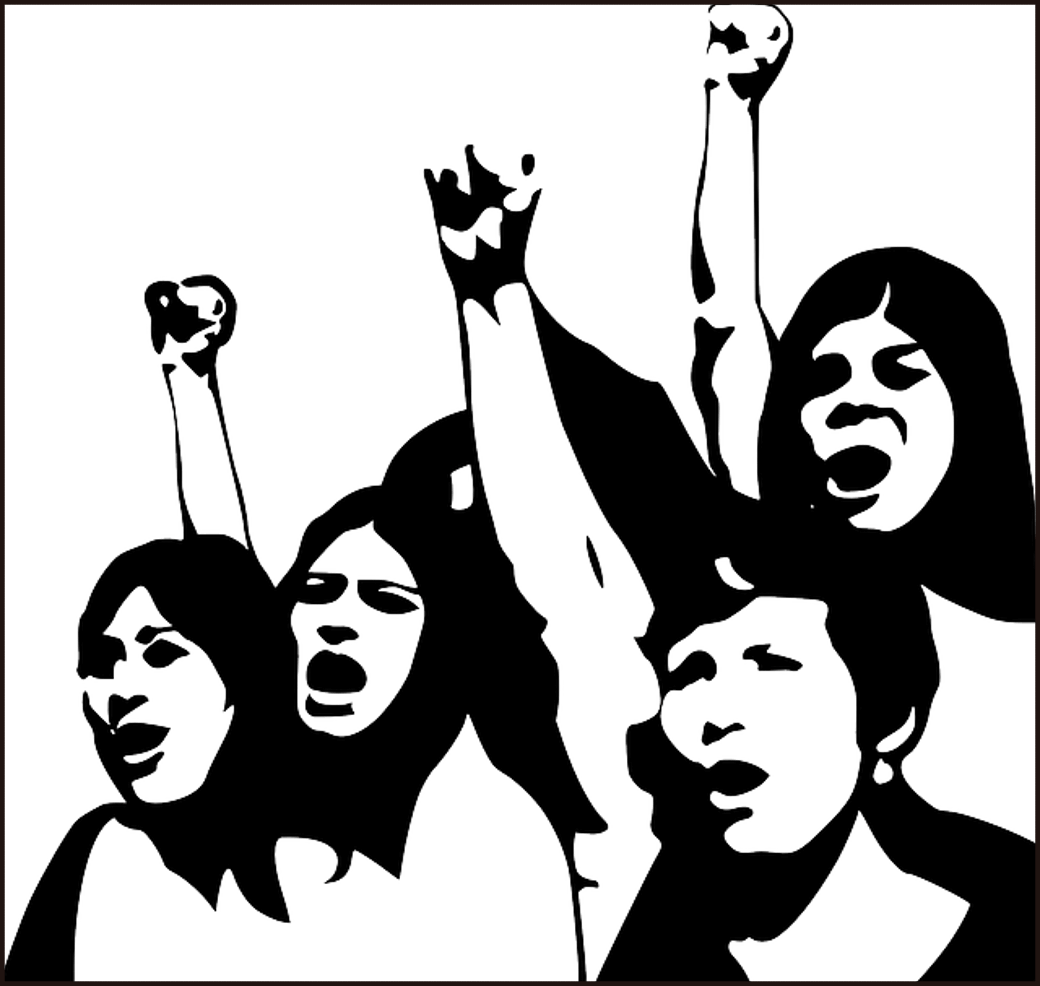
The ongoing people’s movement in the US is demanding justice for George Floyd and for all other African Americans murdered by racist police and civilians – and an end to the systemic racism and militarisation of the police and criminal justice system. While standing in solidarity with this revolutionary movement, we in India also demand a reckoning with the systemic biases and atrocities by the police and state machinery in India, which is being weaponised by the Modi regime against Muslim minorities and pro-democracy protestors.
Liberation Archive
- 2001-2010
-
2011-2020
- 2011
- 2012
- 2013
- 2014
- 2015
- 2016
- 2017
- 2018
- 2019
-
2020
- Liberation, JANUARY 2020
- Liberation, FEBRUARY 2020
- Liberation, MARCH 2020
- Liberation, APRIL 2020
- Liberation, MAY-JUNE 2020
-
Liberation, JULY 2020
- Galwan Valley Clash: Issue a White Paper on the LAC Standoff with China and Resolve the Border Dispute Peacefully and Diplomatically
- The Pandemic and Beyond : Free Quality Healthcare is a Fundamental Right
- A C 2020: Fire engulfs life at large, flames touch personal lives
- Tribute to Fallen Soldiers
- Notes on Migrant Workers: Key Issues and Urgent Tasks
- Impact of Agri-Reform Ordinances on Agrarian Economy
- Protect Reservations and Social Justice
- Foil the BJP-JDU Plot to Steal the Bihar Elections
- Working Class Gears Up Against Modi Govt.'s Renewed Attacks
- SHGs and Microfinance Companies: Legalised Usury in the Name of 'Self-Reliance'
- Agitation against Microfinance Companies in Punjab
- 'Freedom from Debt' Campaign Catches On in Villages of Hooghly District
- MFI Coercion and Debt-Trap in Assam
- Baghjan Fire: A Case of Systematic Plunder of Natural Resources and Human Rights
- Amphan Relief Campaign: Let's Rebuild Bengal
- CPIML Team's Riot Relief Distribution Continues in Delhi!
- Protest Against Racist, Communal, Casteist and Gender Oppression
- Right to Employment Sacrificed at Altar of ‘Austerity Measures’ in Uttarakhand
- Protest The Unconscionable Hike in Petrol and Diesel Prices
- Remembering The Emergency: During Modi's Undeclared Emergency
- The Worldwide Uprising Against Systemic Racism: Lessons For India
- Churchill Must Fall
- Obituary : Gananath Patra, Keshav Ram, Chandan Sarkar, Vidyanand Sahay, Usha Ganguly, Kamal Lohani
- Tributes to Frontline Health and Sanitation Workers Who Fell To Covid-19
- Honouring the Historic Hul Diwas in 2020
- Liberation, AUGUST 2020
- Liberation, SEPTEMBER 2020
- Liberation, OCTOBER 2020
- Liberation, NOVEMBER 2020
- Liberation, DECEMBER 2020
- 2021-2030
Charu Bhawan, U-90, Shakarpur, Delhi 110092
Phone: +91-11-42785864 | Fax:+91-11-42785864 | +91 9717274961
E-mail: info@cpiml.org







